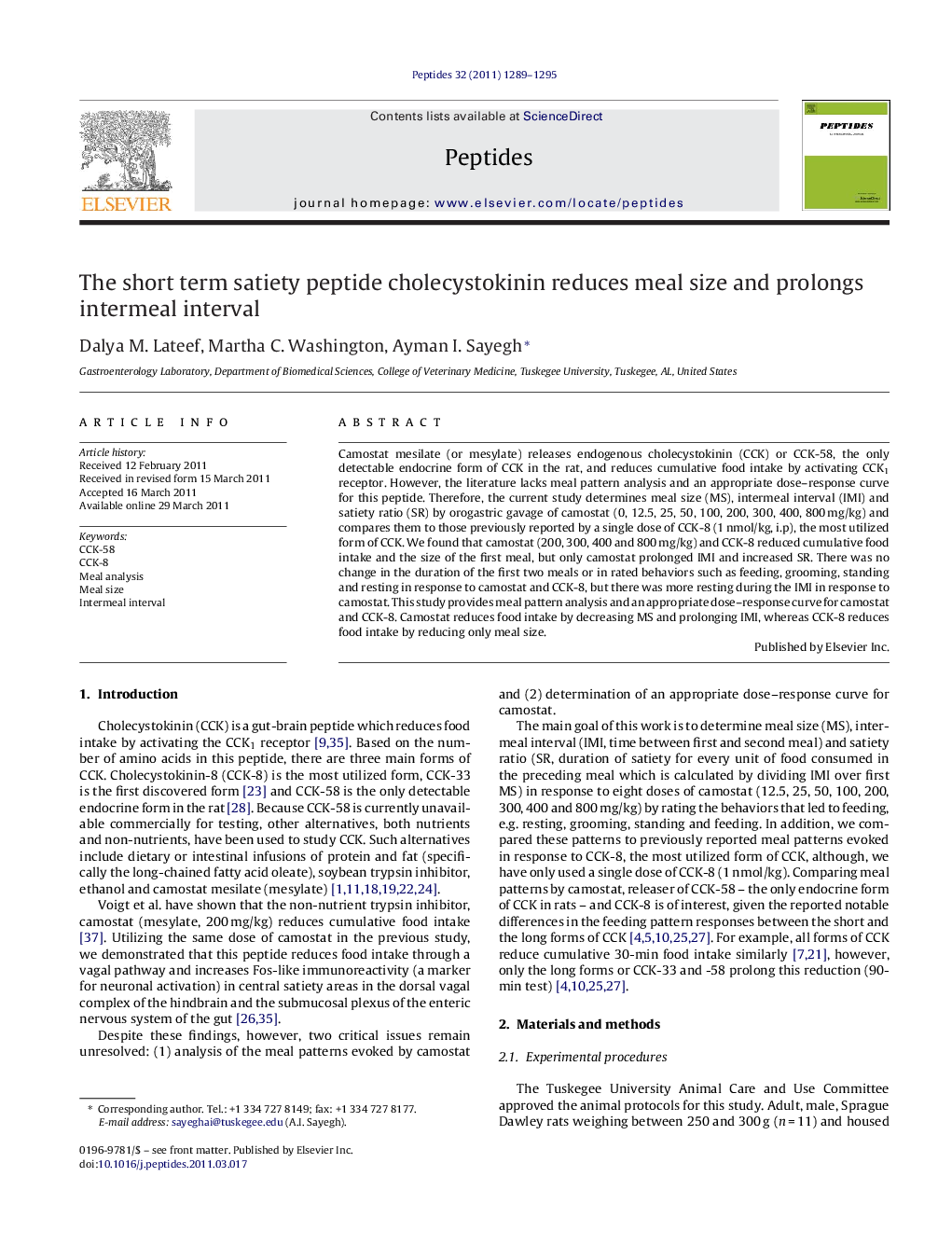| Article ID | Journal | Published Year | Pages | File Type |
|---|---|---|---|---|
| 2006453 | Peptides | 2011 | 7 Pages |
Camostat mesilate (or mesylate) releases endogenous cholecystokinin (CCK) or CCK-58, the only detectable endocrine form of CCK in the rat, and reduces cumulative food intake by activating CCK1 receptor. However, the literature lacks meal pattern analysis and an appropriate dose–response curve for this peptide. Therefore, the current study determines meal size (MS), intermeal interval (IMI) and satiety ratio (SR) by orogastric gavage of camostat (0, 12.5, 25, 50, 100, 200, 300, 400, 800 mg/kg) and compares them to those previously reported by a single dose of CCK-8 (1 nmol/kg, i.p), the most utilized form of CCK. We found that camostat (200, 300, 400 and 800 mg/kg) and CCK-8 reduced cumulative food intake and the size of the first meal, but only camostat prolonged IMI and increased SR. There was no change in the duration of the first two meals or in rated behaviors such as feeding, grooming, standing and resting in response to camostat and CCK-8, but there was more resting during the IMI in response to camostat. This study provides meal pattern analysis and an appropriate dose–response curve for camostat and CCK-8. Camostat reduces food intake by decreasing MS and prolonging IMI, whereas CCK-8 reduces food intake by reducing only meal size.
► We analyzed the meal patterns by camostat and a single dose of CCK-8. ► Camostat reduced meal size (MS) and prolonged IMI but CCK-8 reduced only MS. ► Camostat reduced food intake by limiting MS and prolonging IMI. ► CCK-8 reduce food intake by only limiting meal size.
